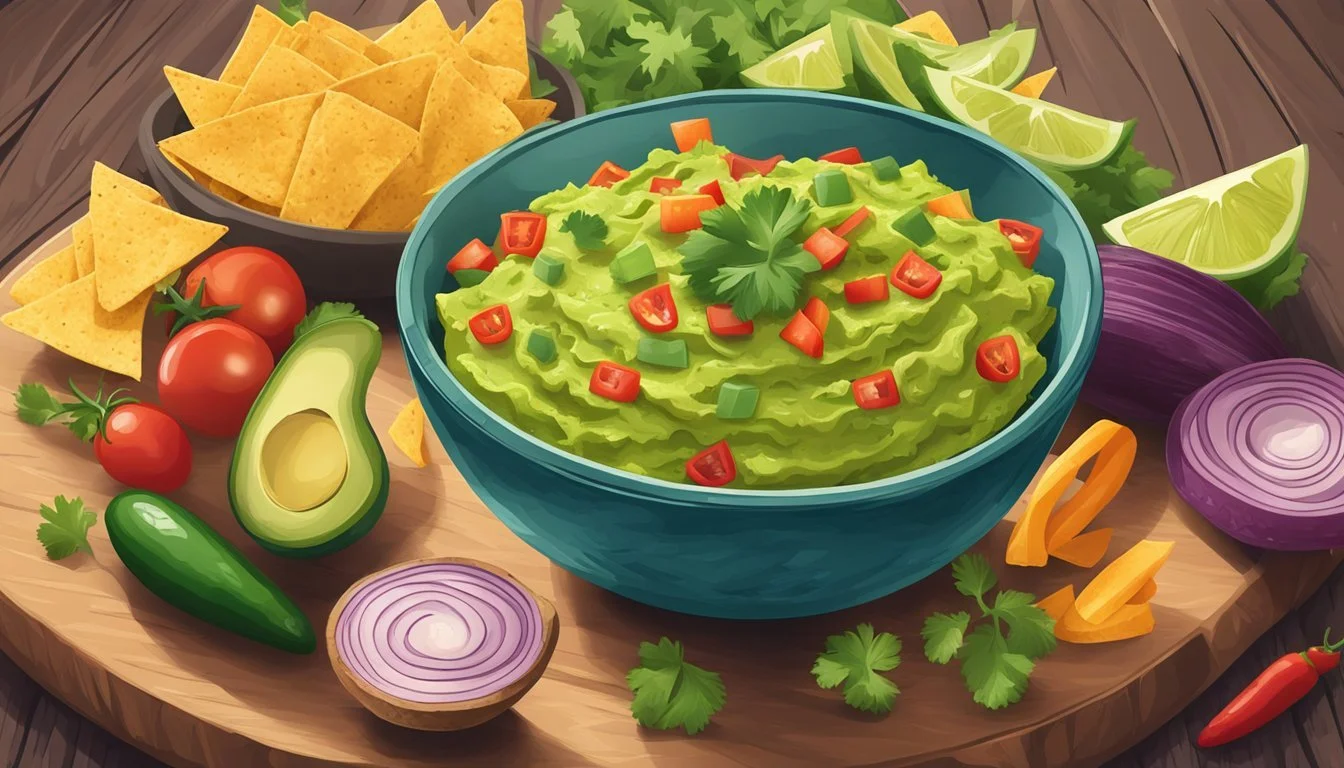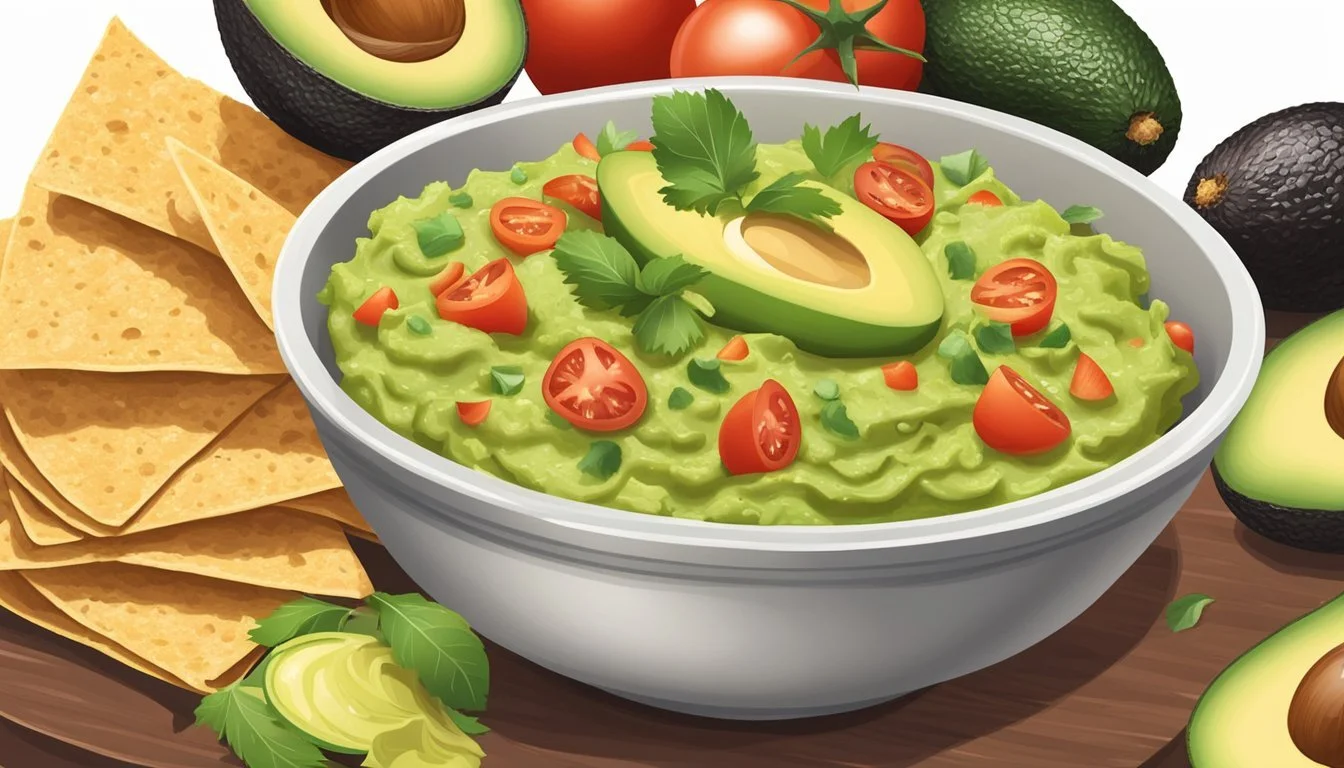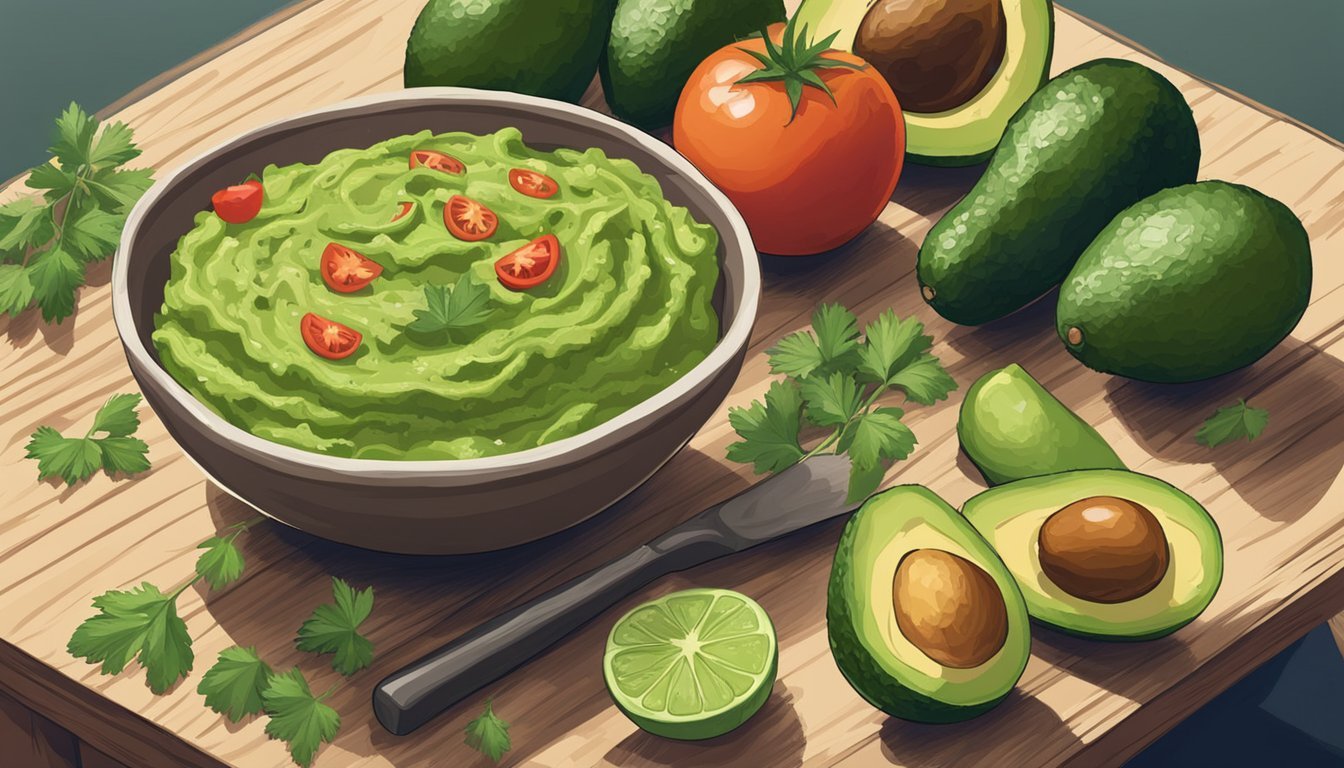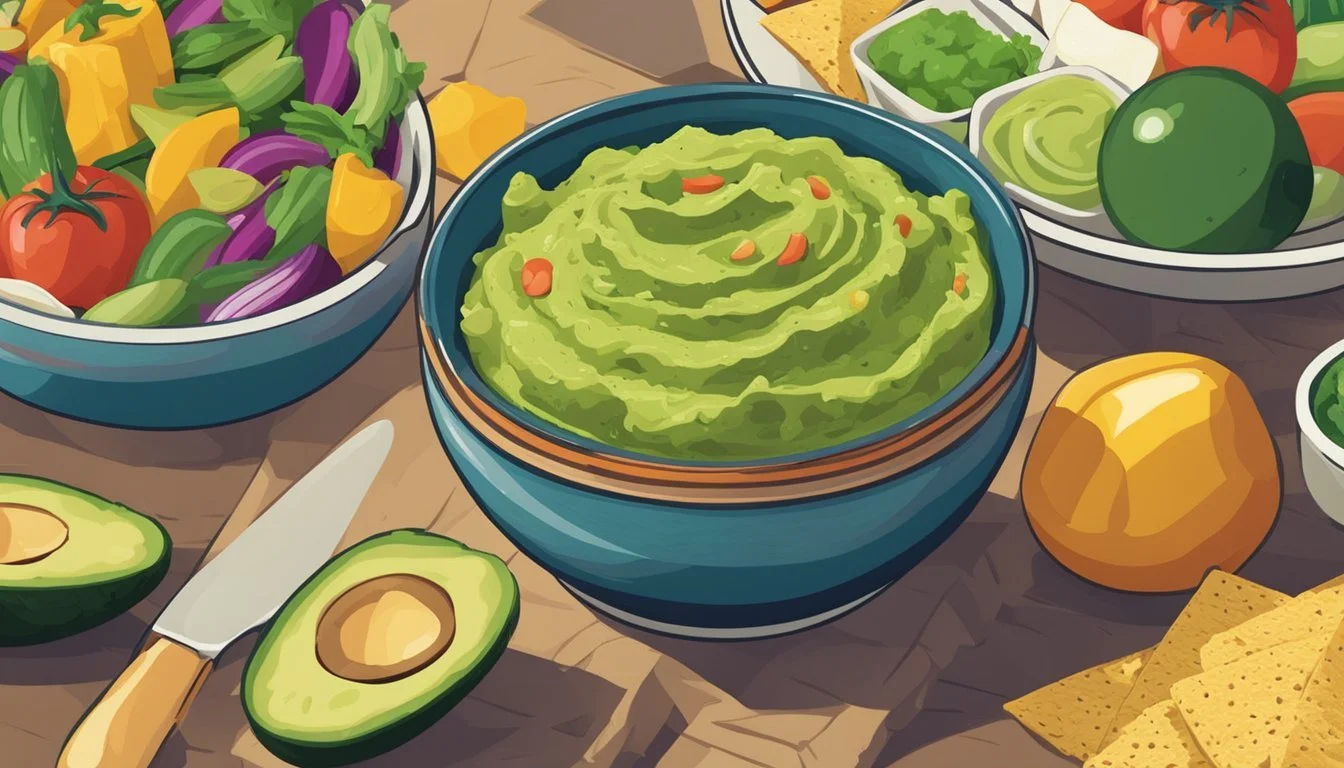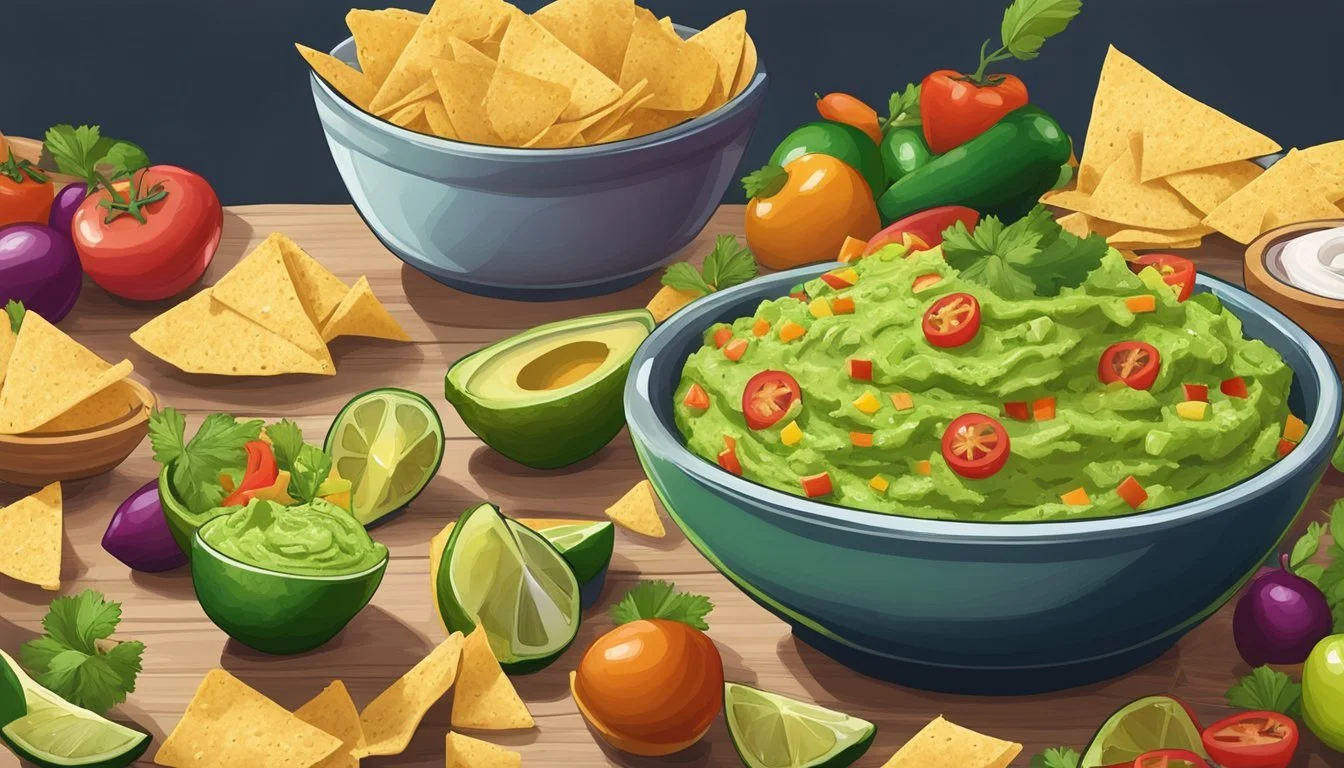Is Guacamole Vegan?
Understanding the Ingredients and Variations
Guacamole, a staple dip originating from Mexico, has gained immense popularity across the globe for its rich, creamy texture and flavorful profile. This traditional dish is typically made from mashed avocados, sea salt, lime juice, onions, (What wine goes well with onions?) and cilantro. Due to its plant-based ingredients, guacamole is inherently vegan-friendly.
However, with the rise in culinary creativity, variations of guacamole recipes may include non-vegan ingredients such as dairy products to enhance creaminess or other additives for flavor. It is important for vegans to inspect the ingredient list of store-bought guacamole or inquire about the composition when dining out to ensure it aligns with vegan dietary preferences.
Vegan individuals looking for a nutritious and tasty option can generally rely on guacamole as a safe choice, either as a snack or a complement to meals. This naturally vegan dish not only caters to those following a plant-based diet but is also enjoyed by a wide audience who appreciate its simplicity and health benefits.
Understanding Guacamole
Guacamole is a versatile and popular dip known for its rich texture and flavorful ingredients. This section explores its origins, traditional components, and common ways it is prepared and served.
Origin and Popularity
The history of guacamole dates back to the Aztecs in what is now Mexico. Its enduring popularity is due in large part to its simple yet satisfying combination of flavors, making it a staple at both casual gatherings and formal events. Guacamole primarily gained global appeal due to the rising interest in Mexican cuisine.
Traditional Guacamole Ingredients
A classic guacamole recipe typically includes the following key ingredients:
Avocados: The base of the dip, providing a creamy texture
Lime juice: Adds a zesty flavor and prevents browning
Onion: Offers a sharp, aromatic element
Cilantro: Delivers a fresh, herbal note
Tomato: Contributes a mild acidity and chunkiness
Garlic: Provides a pungent taste
Jalapeno peppers: For those desiring heat
Sea salt & Pepper: For seasoning to enhance flavors
Typical Preparation and Usage
To prepare guacamole, avocados are peeled, pitted, and mashed to a desired consistency—smooth or chunky. Lime juice, salt, and other diced ingredients are then mixed in. Guacamole serves as a traditional Mexican dip but also garnishes dishes like tacos and burritos.
Guacamole Variations
Texture variations: Ranges from smooth to chunky, depending on the mashing method.
Seasoning adjustments: The addition of sea salt, black pepper, or even cumin can alter the flavor profile.
Additional ingredients: Some variations include additional spices or ingredients for unique twists.
The perfect guacamole balances the creaminess of avocados with the freshness of lime juice and the savory kick of salt and other complements.
Veganism and Food Products
Determining whether a food product aligns with vegan principles involves understanding its ingredients and production process. This section explores the criteria that qualify a product as vegan, common ingredients to watch out for, and the importance of deciphering labels.
What Makes a Product Vegan
A product is deemed vegan if it contains no animal-derived ingredients and has not been tested on animals. Vegan foods should be free from not only obvious animal products such as meat and dairy but also lesser-known non-vegan elements like gelatin or bone char. They focus on plant-based components like vegetables, fruits, grains, nuts, and seeds, which are rich in proteins, fats, and sugars necessary for a balanced diet.
Common Non-Vegan Ingredients
Several ingredients frequently appear in food products that are not vegan-friendly:
Dairy products: Includes milk, cheese, yogurt, and butter.
Gelatin: Derived from animal collagen and used in gummy candies and some desserts.
Honey: Produced by bees, thus excluded from vegan food choices.
Bone char: Often used in refining sugar, making some sugars non-vegan.
L-cysteine: An amino acid sometimes sourced from feathers or hair and used in bread products.
Casein: A milk protein found in some "non-dairy" products.
Consumers should carefully inspect ingredient lists for these and other non-vegan components.
Understanding Labels
Labels offer vital information about the contents and production methods of food products. However, not all vegan-friendly products carry a vegan label. When shopping, individuals should look for certified vegan labels which signify compliance with vegan standards. Additionally, they can read the ingredient list to ensure all items are plant-based. Phrases like "suitable for vegans" or "100% plant-based" can be indicators of a vegan product, but it is always recommended to check the full list of ingredients for any hidden non-vegan items.
Analyzing Guacamole's Vegan Status
Guacamole, traditionally a Mexican dip, primarily consists of ripe avocados, contributing to its rich content of potassium, fiber, vitamin C, and healthy fats. In its most basic form, this popular dish is made by mashing ripe avocados and adding a variety of other plant-based ingredients, which may include tomatoes, onions, cilantro, lime juice, and seasonings like salt and pepper.
Ingredients Commonly Found in Vegan Guacamole:
Avocado
Lime juice
Cilantro
Red onion
Tomato
Garlic
Salt
Pepper
The core ingredients are plant-derived and contribute essential nutrients, with avocado offering a substantial amount of healthy fat. Furthermore, avocados contain a variety of vitamins and minerals such as calcium and iron, albeit in smaller quantities compared to their more prominent nutrients.
When assessing whether guacamole is vegan, the basic recipe is typically free of dairy, eggs, and any other animal-derived ingredients, making it suitable for a vegan diet. However, it is also crucial to scrutinize any added components that may not be vegan, such as certain brands of sugar or additives sometimes used in pre-made guacamoles.
In commercially prepared guacamole, one must review the label to ensure no non-vegan elements are included. Some store-bought versions may contain dairy or additional preservatives that are not plant-based.
Therefore, when made with the aforementioned components, guacamole can be confidently classified as vegan. Yet, diligence is advised when purchasing pre-made guacamole or when dining out, as recipes can vary, and some may include non-vegan items.
Guacamole Recipes and Variants
The versatility of guacamole allows for a range of recipes and variants fitting to various tastes and dietary preferences. This section explores how one can enjoy the classic vegan guacamole recipe, get creative with various add-ins, and choose between store-bought and homemade versions.
Classic Vegan Guacamole Recipe
A traditional vegan guacamole recipe revolves around the ripe avocado, an excellent source of healthy fats and nutrients. Ingredients like lime juice, cilantro, and sea salt are staples in these recipes. A basic vegan guacamole might look like this:
2 ripe avocados
1 tablespoon lime juice
2 tablespoons chopped cilantro
1/4 cup finely chopped red onion
2 minced garlic cloves
Salt and black pepper to taste
Instructions: Mash the avocados in a bowl, mix in lime juice and cilantro, then fold in onions and garlic. Season with salt and pepper.
Creative Variations and Add-Ins
Guacamole can be personalized with a variety of spices and add-ins to enhance its flavor profile and nutritional content. Some popular add-ins include:
Chopped tomatoes to add a juicy texture.
Cumin or coriander for a warm, spicy note.
A pinch of smoked paprika for a subtle complexity.
Incorporating these ingredients can add extra dimensions to the taste and allow guacamole to complement a multitude of meals, from salads to burritos.
Store-Bought Versus Homemade
When considering store-bought guacamole, one can find a variety of brands like Wholly Guacamole, Sabra Classic Guacamole, and Yucatan Mild Guacamole. Comparing them can reveal differences in sodium, calories, and other nutritional aspects.
Brand Sodium (mg) Calories Carbohydrates (g) Wholly Guacamole Variable Variable Variable Sabra Classic Guacamole Variable Variable Variable Yucatan Mild Guacamole Variable Variable Variable
While homemade guacamole allows for customization and freshness, store-bought options can provide convenience and a consistent flavor for snacks and quick meal preparations.
Serving and Pairing Guacamole
Guacamole serves as a versatile component in various dishes, catering to both taste and nutrition. This section will explore how to best enjoy and maintain the quality of your guacamole.
Ideal Pairings and Accompaniments
Guacamole is traditionally served with tortilla chips as an appetizer, but its uses extend far beyond. It pairs well with an array of vegetables, such as carrot sticks and bell peppers, providing a refreshing crunch and nutritional balance. For those seeking alternative grains, guacamole complements rice dishes or can be used as a topping on vegan bowls. When preparing guacamole, incorporating finely chopped red onion, tomatoes, and a dash of garlic powder enhances its flavor profile.
Vegetable Crudites: Carrots, celery, bell peppers
Grains: Rice bowls, quinoa dishes
Chips: Tortilla chips, pita chips
Innovative Dishes Featuring Guacamole
Many restaurants are now introducing innovative dishes that feature guacamole. A popular chain, Chipotle, has made it a staple in their customizable Mexican bowls. In home cooking, one can mix guacamole into salads, spread it over toasted bread, or use it as a condiment for burgers, especially where a creamy texture is desired without the use of dairy.
Vegan Tacos: Use guacamole as a filling
Toasted Bread: Spread guacamole on top
Vegan Burgers: A flavorful condiment option
Tips for Selecting and Storing Avocados
The freshness of guacamole hinges on the quality of its primary ingredient, avocados. Select avocados with a slight give when pressed gently; too soft may indicate overripeness, while too hard signifies immaturity. For storing, place guacamole in an airtight container and press plastic wrap directly onto the surface to minimize air exposure. While freezing is an option, it may alter the texture, so it's best consumed fresh. To maintain the freshness and vibrant green color, adding acid like lime or lemon juice is effective.
Selecting: Choose avocados that are firm yet yielding to gentle pressure.
Storing: Press plastic wrap onto the guacamole's surface and refrigerate.
Freezing: Possible but not recommended due to texture changes.
Nutritional Profile of Guacamole
The nutritional profile of guacamole is composed of health benefits, caloric content, and essential vitamins and minerals derived from its primary ingredient, avocados, and additional ingredients.
Health Benefits
Guacamole is a nutrient-dense dip primarily made from avocados, which contribute monounsaturated fats, known for supporting heart health. It is also a source of dietary fiber, beneficial for digestive health.
Calories and Macronutrients
A typical serving of guacamole (about 2 tablespoons) contains:
Calories: Approximately 45-50
Fat: 4 grams, predominately monounsaturated ("healthy fats")
Protein: 0.5-1 gram
Carbohydrates: Roughly 2-4 grams
Fiber: 2 grams, which aids in satiety and supports a healthy digestive system
Micronutrients and Vitamins
Guacamole is rich in a variety of micronutrients:
Vitamin C: Essential for immune function and skin health
Vitamin A: Supports vision and immune health
Potassium: Vital for heart function and muscle contractions
Folate: Important for DNA synthesis and repair
Vitamin E: An antioxidant that protects body tissue from damage
The acidity from added lime juice not only enhances flavor but may also increase the absorption of some nutrients. While guacamole is low in sodium, it contains iron and calcium in smaller amounts, which are crucial for blood health and maintaining strong bones, respectively.
Guacamole in Commercial Establishments
When seeking out vegan-friendly guacamole in commercial settings, consumers find a range of options varying by restaurant or store, and in fresh or packaged forms. The offerings fluctuate with respect to recipe authenticity, ingredient quality, and vegan compliance.
Guacamole Options in Restaurants
Restaurants typically serve guacamole that adheres to traditional vegan recipes, which include avocados, sea salt, lime juice, onions, jalapeños, and cilantro. However, diners should inquire about the addition of non-vegan ingredients, as variations in recipes do occur. Whole Foods is known for its fresh, vegan-friendly guacamole in the prepared foods section.
Packaged Guacamole Ratings and Reviews
Packaged guacamole brands offer convenience and vary widely in texture and flavor. Among top-rated options, Sabra Classic Guacamole and Wholly Guacamole receive positive reviews for their taste and freshness, with many consumers favoring them for their close-to-homemade quality. Reviewers often mention the zesty hit of lime in Sabra Guacamole with Lime.
Freshness Guaranteed Guacamole, found in select stores, has a mixed reception; some critics find the taste acceptable, while others prefer the texture provided by more premium brands.
Guacamole at Fast Food Chains
Fast food chains such as Subway have embraced guacamole as a condiment, offering a vegan-friendly version to complement their subs. The emphasis is often on delivering a consistent product that appeals to a broad customer base, rather than on replicating authentic flavors. Fast food guacamole tends to be milder and creamier, with a focus on providing a uniform experience across multiple locations.
Food Preservation Techniques
Maintaining the freshness of guacamole is crucial to prolong its shelf life and retain its taste. Efficient storage methods help prevent spoilage while keeping the guacamole safe for consumption.
Extending Guacamole's Freshness
To extend the freshness of homemade guacamole, it is important to reduce its exposure to air. A common technique involves pressing plastic wrap directly onto the surface of the guacamole before sealing the container. Some recipes recommend adding a thin layer of oils or distilled vinegar on top of the guacamole to act as a barrier against air. Ingredients like jalapenos contain acids that might naturally slow down the oxidation process, which can help retain the dip's vibrant green color and freshness.
Proper Storage Methods
Guacamole should be stored in an airtight container to minimize oxidation. Refrigeration is key; homemade guacamole should ideally be consumed within a day or two, but proper storage can extend its life a few days more. When storing guacamole, keeping it at a consistent, cool temperature is vital to delay spoilage.
For those looking to preserve guacamole for longer periods, freezing is an option. To freeze guacamole, it should be packed in an airtight container with minimal headspace or in a heavy-duty freezer bag. A potato masher is useful for compacting the guacamole before sealing to remove air pockets. It's important to note that while freezing can preserve guacamole for up to a few months, texture and flavor changes are possible upon thawing.
Ethical and Environmental Considerations
When assessing guacamole from an ethical and environmental perspective, it is important to understand that while the main ingredients of guacamole—avocados, onions, tomatoes, lime juice, and cilantro—are plant-based and typically suitable for a vegan diet, some ethical considerations may still apply.
Avocado farming can have significant environmental impacts. The high demand for avocados has led to concerns like deforestation and excessive water use. Ethically-minded consumers may seek out brands that prioritize sustainability and eco-friendly farming practices.
Eco-Friendly Practices Include:
Water conservation techniques
Organic farming
Fair trade certification
Furthermore, true vegan products avoid all forms of animal exploitation and harm. Therefore, vegans might also be cautious about ancillary ingredients. For instance, some sugars are processed with bone char—a product derived from animal bones. Thus, an evaluation of all ingredients—down to additives like sugar—is essential.
Guacamole's Vegan Profile:
Avocado: Main ingredient, plant-based, check for sustainable farming
Onions/Tomatoes: Vegan, consider the source for eco-practices
Lime Juice: Vegan, some processing methods may raise concerns
Cilantro: Vegan and typically low impact on environment
Additives: Potential non-vegan elements like bone char in sugar
Ethical consumers often opt for products labeled as cruelty-free or vegan certified to ensure that their purchase aligns with their values. By doing so, individuals support a more sustainable food system while adhering to their ethical convictions.
Beyond the Dip: Guacamole as an Ingredient
Guacamole extends its culinary versatility beyond being a classic dip; it figures prominently as both a nutritious and flavorful addition to salads and bowls, as well as a rich, creamy spread for various sandwiches (What wine goes well with sandwiches?).
Guacamole in Salads and Bowls
Salads and burrito bowls significantly benefit from the inclusion of guacamole, providing not just a rich texture, but a plethora of nutritional advantages. Guacamole, a blend of avocados, onions, tomatoes, cilantro, and lime juice, introduces a healthy dose of monounsaturated fats, fiber, and antioxidants. When vegan guacamole is used in salads, it acts as both an ingredient and a dressing, eliminating the need for additional oil-based dressings.
Salad Enhancement:
Creamy texture
Rich flavor
Additional nutrients like potassium and vitamin E
Burrito Bowl Companion:
Complements beans and rice
Balances spicy flavors
Adds a cooling element
Guacamole as a Sandwich Spread
As a spread for sandwiches, guacamole offers a dairy-free alternative to traditional spreads like mayonnaise and butter. Its smooth and spreadable consistency works well with crispy vegetables and plant-based proteins, creating a hearty and satisfying experience for the palate. Sandwiches that incorporate vegan guacamole not only cater to vegan diets but also appeal to those seeking healthier sandwich options.
Sandwich Benefits:
Acts as a moisture barrier
Introduces complex flavors
Satisfies with healthy fats
By exploring guacamole's potential as an ingredient in salads, bowls, and as a sandwich spread, its role in the kitchen significantly expands, proving that its appeal goes far beyond its origins as a traditional dip.

